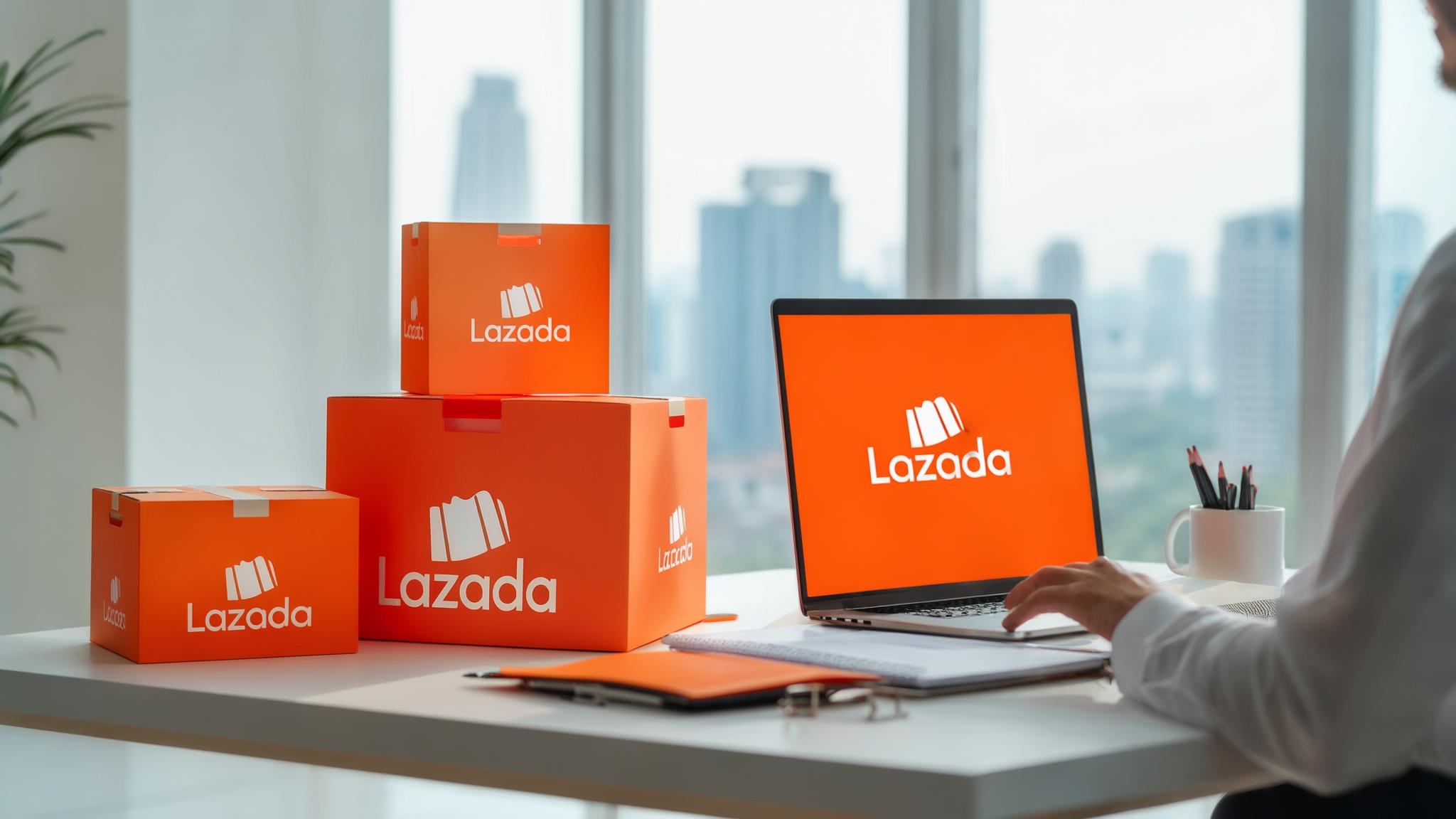Table of Contents
-
The Digital Transformation That Changed Everything
-
From Inventory Nightmare to Marketplace Gold Mine
-
Mobile-First Strategy: Why Apps Beat Websites Every Time
-
Cracking the Southeast Asian Market Code
-
The Numbers Game: Revenue Optimization That Actually Works
-
Data-Driven Marketing: Beyond Gut Feelings and Guesswork
-
When Alibaba Came Knocking: Acquisition Impact Analysis
-
Surviving Crisis Mode: Pandemic Response and Market Disruption
-
What This Means for Your Marketing Strategy
TL;DR
-
Lazada ditched their inventory headaches for a marketplace model, cutting warehousing costs by 60% while going from thousands to millions of products
-
Their mobile app loaded 40% faster and converted 25% better than their website – mobile became their money maker
-
Local marketing campaigns that actually understood each country’s culture got 300% higher engagement than generic promotions
-
They spent $12-18 to get customers who ended up being worth $150-200 – math that actually works for growth
-
Turns out social media was doing 30% more heavy lifting than they thought, which boosted their return on ad spend by 45%
-
Alibaba’s billion-dollar buyout in 2016 fast-tracked their tech development by 3-5 years
-
While competitors crumbled during COVID, they kept 95% of orders flowing
The Digital Transformation That Changed Everything
You know what’s funny? Everyone thinks building a billion-dollar company is just about having a great idea and working hard. Then you actually try it, and reality hits like a truck. This Lazada case study reveals the messy reality behind Southeast Asia’s e-commerce success story – complete with strategic pivots, operational nightmares, and the kind of decision-making that separates winners from cautionary tales.
Since launching in 2012, Lazada has raised $647 million in funding, establishing itself as one of Southeast Asia’s most valuable unicorn companies. According to IIDE’s comprehensive analysis, when they actually looked at the numbers, their traffic shot up by over 30% and market share grew by 50% through some smart moves with Google AdWords’ flexible bid strategies. Not bad for some tweaks to their advertising approach, right?
What makes their transformation fascinating is trying to crack six completely different markets at the same time. Thailand, Singapore, Malaysia, Indonesia, Philippines, and Vietnam – each one might as well be a different planet when it comes to consumer behavior, regulations, and established competitors. Yet somehow, they created a platform that worked everywhere.
The secret? They didn’t have it all figured out from the start. Nobody does. What made them different was when something wasn’t working, they actually admitted it and changed course. When they spotted an opportunity, they moved fast. This flexibility became their competitive weapon in markets where rigid strategies fail spectacularly.
Understanding market opportunities requires systematic analysis, which is why comprehensive market sizing methodologies become essential for businesses looking to replicate similar expansion strategies across diverse regional markets.

From Inventory Nightmare to Marketplace Gold Mine
So picture this: you’re running an online store and you think, “Hey, I’ll just buy a bunch of stuff and sell it.” Sounds easy enough, right? Wrong. Suddenly you’re drowning in warehousing costs, you can only sell what you bought, and scaling to new countries means buying even more stuff you might not be able to sell.
Here’s where things got interesting. They ditched the whole “we’ll store everything ourselves” approach and basically said, “Hey, why don’t we just let other people sell their stuff on our platform?” Game changer. Warehousing costs dropped by 60% while their product catalog exploded from thousands to millions of SKUs. Suddenly, they weren’t competing on how much inventory they could afford – they were competing on how good their platform was.
|
Business Model Comparison |
Inventory Model |
Marketplace Model |
|---|---|---|
|
Capital Requirements |
High (inventory investment) |
Low (platform development) |
|
Product Variety |
Limited (thousands of SKUs) |
Extensive (millions of SKUs) |
|
Warehousing Costs |
100% baseline |
60% reduction |
|
Scalability |
Country-by-country expansion |
Multi-market simultaneous growth |
|
Risk Profile |
High (unsold inventory) |
Low (commission-based revenue) |
Building the Seller Ecosystem That Actually Works
Creating a successful marketplace isn’t just about connecting buyers and sellers and calling it a day. Lazada invested heavily in actually helping their sellers succeed – logistics, payments, marketing tools, the whole nine yards. This created what business folks call “network effects,” but really it just means each new seller made the platform better for everyone else.
The financial implications of marketplace transitions require careful analysis, particularly when calculating revenue optimization strategies that account for commission structures, operational costs, and scalability factors across multiple market segments.
Lazada’s LazMall serves as their premium tier that showcases “selected brands from around the world and locally, top online brands and authorized brand distributors.” This curated approach lets them charge commission rates capped at 5% per transaction, showing how being picky about who sells on your platform can actually make you more money.
The seller ecosystem became their competitive moat. Traditional retailers couldn’t easily replicate the variety, pricing, and convenience that millions of third-party sellers provided. More importantly, sellers became invested in Lazada’s success because their own businesses depended on it.
Marketplace Revenue Diversification Strategy
Checklist: Essential Marketplace Revenue Streams
-
Transaction commissions (1-4% for standard marketplace, up to 5% for premium LazMall)
-
Payment processing fees for secure transaction handling
-
Logistics services for last-mile delivery solutions
-
Advertising revenue from sponsored product placements
-
Value-added services (recharge, gift cards, insurance, travel deals)
-
Grocery delivery through acquired platforms like RedMart
-
Financial services and payment solutions for underserved markets
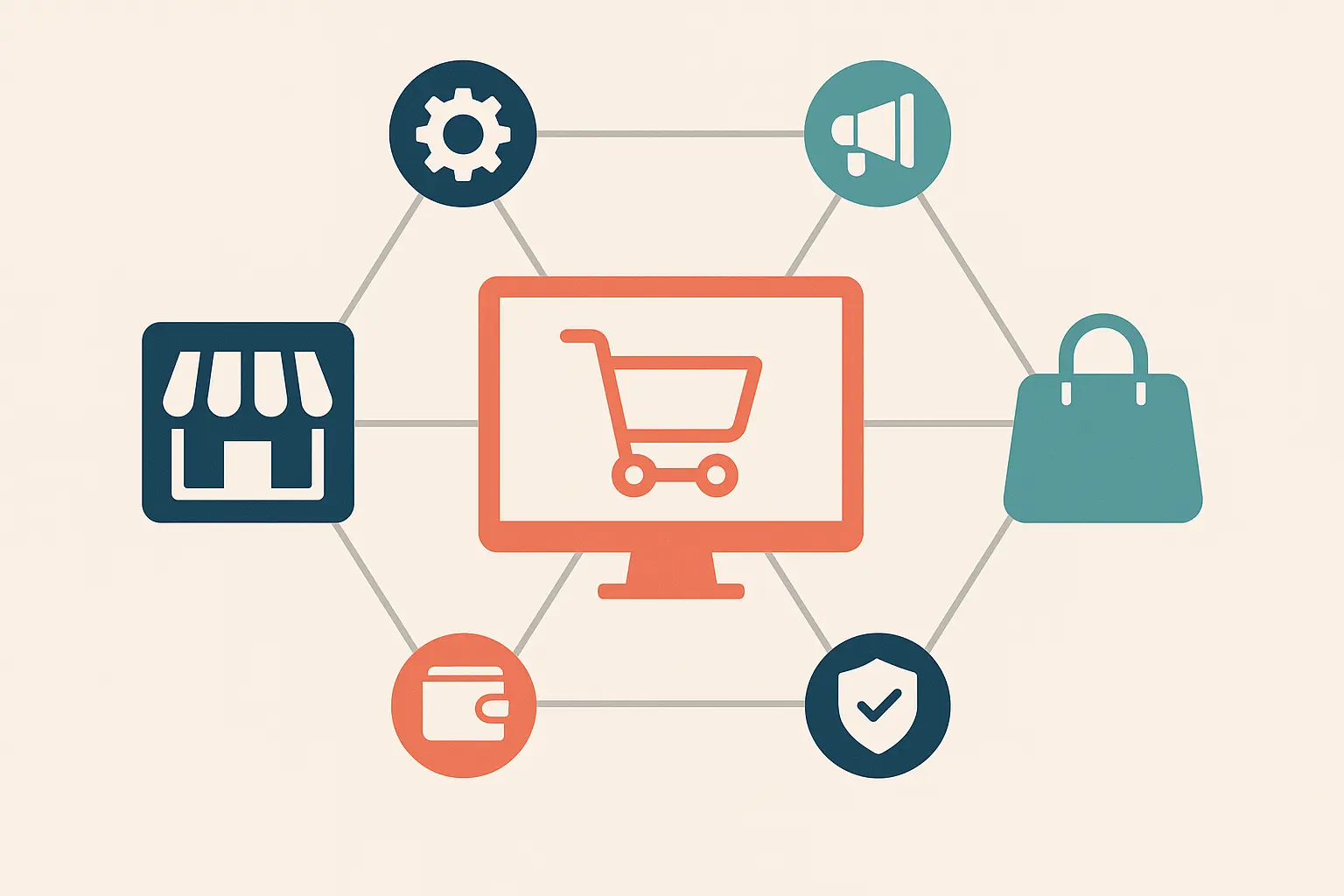
Mobile-First Strategy: Why Apps Beat Websites Every Time
Mobile commerce in Southeast Asia isn’t a trend – it’s how people actually shop online. Lazada figured this out early and built their entire strategy around mobile-first experiences while competitors were still trying to make their desktop websites work on phones.
The results? Pretty impressive. You know how frustrating it is when a website takes forever to load on your phone? Yeah, Lazada figured that out too. Their app loaded 40% faster than their mobile website. Doesn’t sound like much, but when you’re trying to buy something quickly, those seconds matter. The speed boost led to 25% higher conversion rates, making mobile their primary money maker.
Based on comprehensive business model analysis, Lazada’s first four months of 2021 generated 38,286,700 monthly web visits, positioning them as the second most visited e-commerce website in Southeast Asia. Not bad for a company that started in 2012.
The Technology Behind the Speed
Speed doesn’t just happen by accident in mobile commerce. Lazada’s engineering team became obsessed with app performance, knowing that every second of load time directly hit their bottom line. They optimized everything from image compression to database queries, creating experiences that felt instant even when you’re on a sketchy network connection.
But it wasn’t just about speed. Machine learning algorithms analyzing user behavior, purchase history, and browsing patterns enabled personalized product recommendations that increased average order value by 35%. The technology wasn’t about being fancy – it was about showing people stuff they actually wanted to buy.
Payment Integration That Actually Works
Here’s where a lot of international companies mess up: they assume everyone wants to pay with credit cards like in the US. Payment friction was one of the biggest barriers to mobile commerce adoption in Southeast Asia. Lazada solved this by integrating local payment methods including digital wallets, bank transfers, and good old cash-on-delivery options. This localized approach reduced cart abandonment rates from 70% to 45%.
The payment gateway integration went beyond just accepting different payment types. They created experiences that felt natural to users in each market. What worked in Singapore didn’t necessarily work in Indonesia, so they built flexibility into every transaction.

Cracking the Southeast Asian Market Code
Expanding across Southeast Asia isn’t like opening new stores in different cities in the same country. Each country has distinct languages, currencies, regulations, and shopping habits. This Lazada case study reveals how they developed frameworks that could be adapted locally while still making operational sense.
This is where a lot of Western companies mess up big time. You can’t just copy-paste your marketing across different countries and expect it to work. Lazada got this. They actually paid attention to local holidays and festivals – imagine that! – and tailored their campaigns accordingly. Campaigns built around local events generated 300% higher engagement rates compared to generic promotional activities.
“Celebrating Lazada’s Epic Birthday Sale 2025 with a Surprise” from AnyMind Group shows how they’re still nailing this approach. Their March 2025 influencer-driven birthday celebration involved 133 creators across different tiers, with individual posts getting up to 158,000 views and over 13,000 engagements. That’s what happens when you actually understand your audience.
Strategic Partnerships That Opened Doors
Market entry in Southeast Asia often requires local partnerships to navigate regulations and build consumer trust. But Lazada’s partnerships weren’t just about checking compliance boxes – they were about credibility and actually getting stuff done.
Local logistics partnerships were particularly crucial. Infrastructure in many Southeast Asian markets made last-mile delivery challenging. By working with local providers who actually knew the terrain, traffic patterns, and customer preferences, Lazada could offer delivery options that international competitors couldn’t match.
Strategic market expansion requires sophisticated financial planning, particularly when evaluating marketing ROI calculations that account for localization costs, partnership investments, and region-specific customer acquisition expenses across diverse cultural markets.
|
Market Adaptation Framework |
Singapore |
Indonesia |
Thailand |
Philippines |
Malaysia |
Vietnam |
|---|---|---|---|---|---|---|
|
Primary Language |
English |
Bahasa Indonesia |
Thai |
Filipino/English |
Malay |
Vietnamese |
|
Preferred Payment |
Credit Cards, Digital Wallets |
Cash on Delivery, Bank Transfer |
Cash on Delivery, Mobile Banking |
Cash on Delivery, Remittance |
Online Banking, E-wallets |
Cash on Delivery, Mobile Payment |
|
Key Cultural Events |
Chinese New Year, Deepavali |
Ramadan, Independence Day |
Songkran, Loy Krathong |
Christmas, Sinulog |
Chinese New Year, Hari Raya |
Tet Holiday, Mid-Autumn Festival |
|
Logistics Challenge |
Limited land space |
Island geography |
Traffic congestion |
Island archipelago |
Urban-rural divide |
Infrastructure development |
Competitive Differentiation Through Innovation
In markets with established players, Lazada identified gaps and figured out unique ways to add value. Investment in last-mile delivery solutions including motorcycle couriers, pickup points, and same-day delivery options addressed infrastructure limitations while creating service differentiation that competitors couldn’t easily copy.
The logistics innovation wasn’t about being the fastest – it was about being reliable and convenient. Traditional retailers couldn’t easily replicate these delivery networks because they required deep local knowledge and serious infrastructure investment.
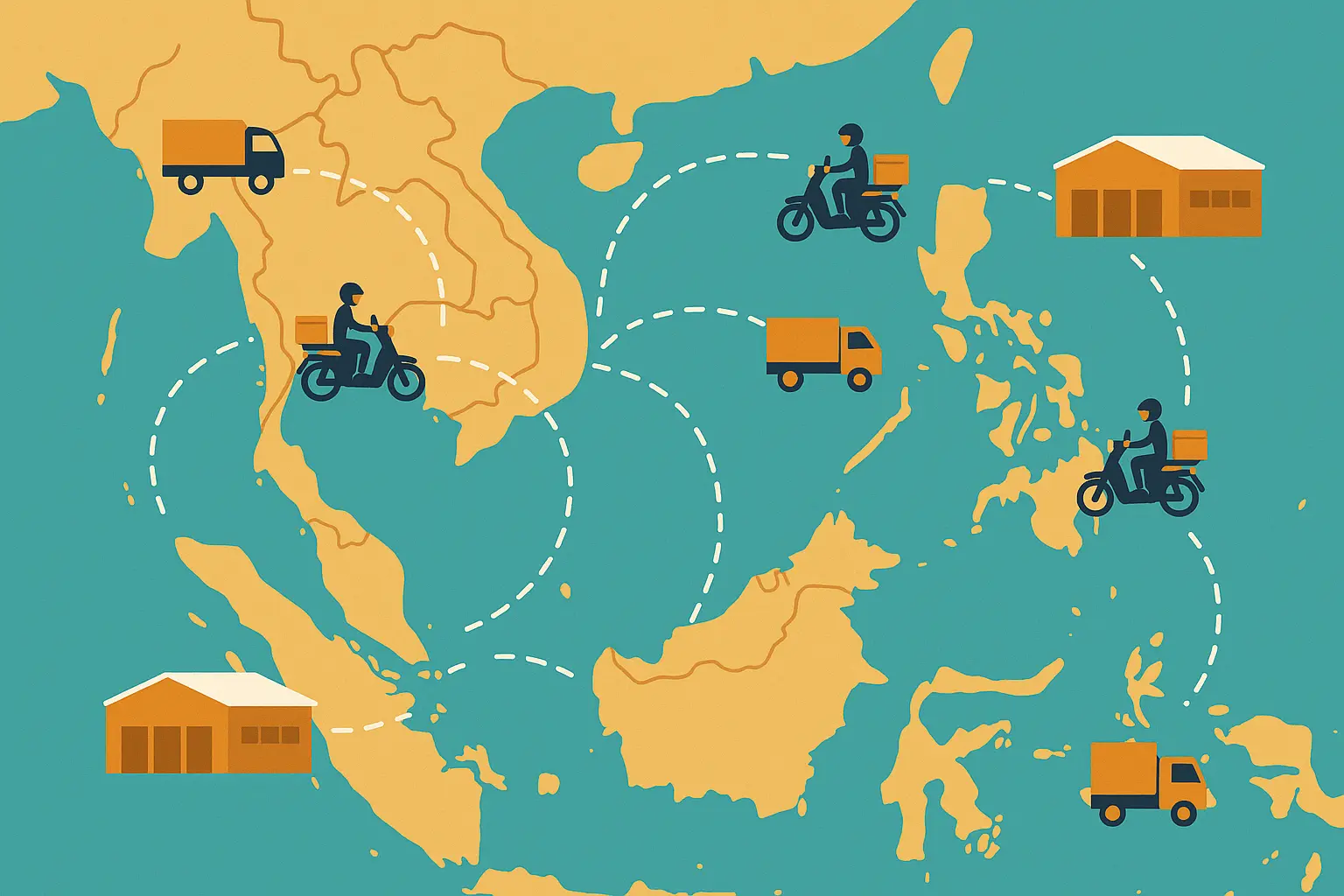
The Numbers Game: Revenue Optimization That Actually Works
Building a sustainable e-commerce business requires more than just processing transactions and hoping for the best. Lazada’s approach to making money focused on unit economics that actually made sense. They tracked how much it cost to get customers, how much those customers were worth, and made strategic decisions based on math that worked.
Their marketing campaigns cost them $12-18 to get each new customer while generating average customer lifetime values of $150-200. That’s the kind of math that lets you spend aggressively on growth while still making money in the long run.
Effective revenue optimization requires understanding the relationship between marketing spend and returns, which makes ROAS calculation methodologies essential for businesses seeking to replicate similar customer acquisition and lifetime value optimization strategies.
Lazada’s partnership with Amorepacific shows how smart physical-digital integration works. Their first physical store in Singapore, launched in December 2019, saw a 5X expansion in sales from January to March 2020, with more than 80% of customers being new Amorepacific buyers and 20% being new Lazada customers. That’s what happens when you actually think about how online and offline can work together.
Organic Growth That Compounds
Paid advertising gets all the attention, but organic growth mechanisms often provide better long-term value. Lazada’s referral programs, social sharing incentives, and user-generated content strategies contributed 40% of new customer acquisitions without direct advertising costs.
The organic growth wasn’t accidental. They built sharing and referral mechanisms directly into the user experience, making it easy and rewarding for satisfied customers to bring in new users. This community-driven growth created a sustainable acquisition channel that got better over time instead of more expensive.
Diversifying Revenue Beyond Transactions
Transaction fees provide steady revenue, but they’re not the only way to make money from an e-commerce platform. Lazada diversified into advertising revenue, logistics services, and financial products. Sponsored product placements and brand advertising generated 25% of total revenue by year five.
Ancillary services including logistics-as-a-service and payment processing for external merchants created additional revenue streams worth $50M annually. These services leveraged existing infrastructure investments for maximum efficiency while providing value to merchants beyond just the platform.
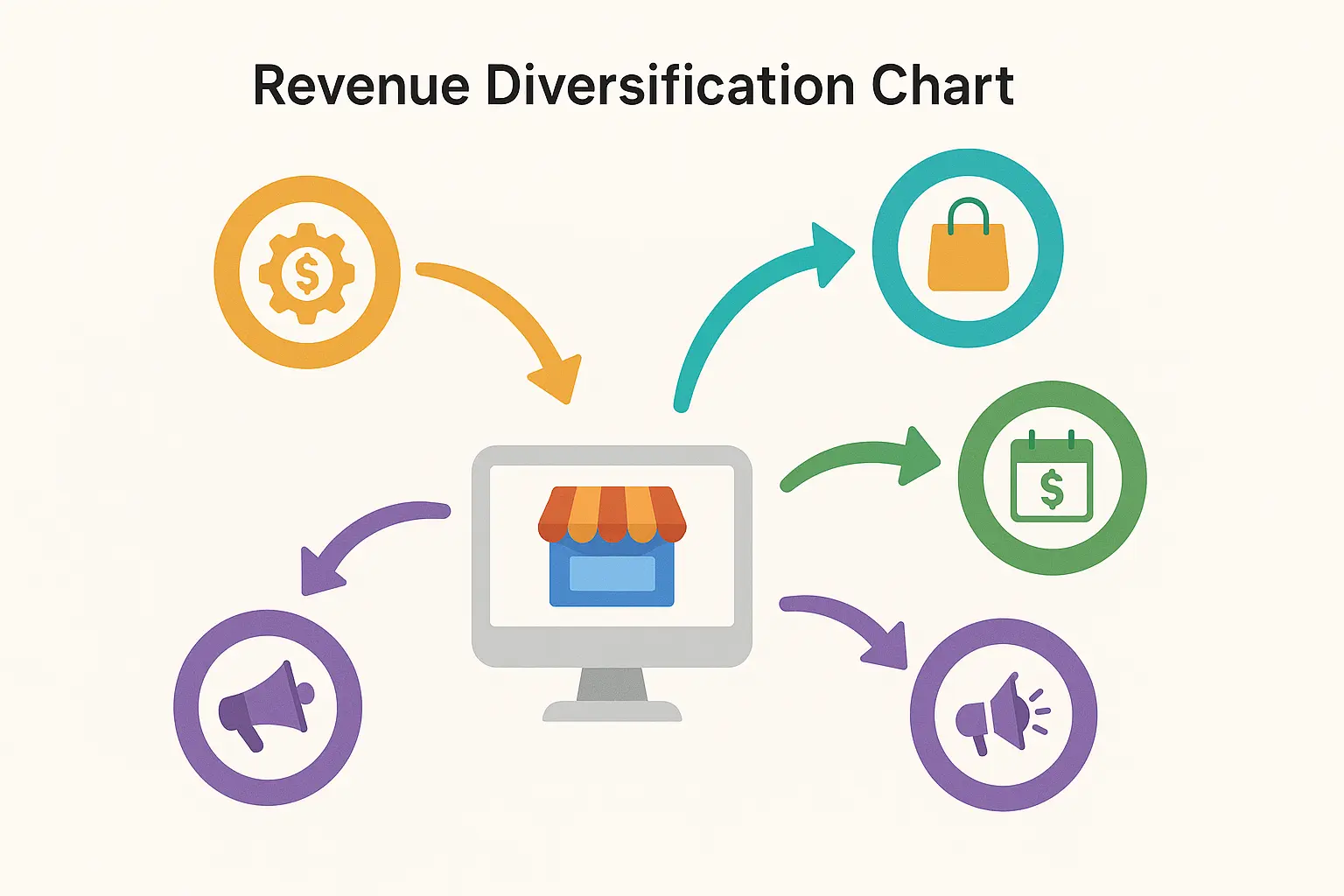
Data-Driven Marketing: Beyond Gut Feelings and Guesswork
Look, marketing decisions based on gut feelings might work for small businesses, but they don’t scale across multiple countries and customer segments. This Lazada case study reveals how they built their marketing strategy on actually looking at the data rather than just guessing and hoping for the best.
Here’s what’s wild – when they dug deeper into their attribution data, they realized social media was doing 30% more heavy lifting than they thought. Turns out they were totally wrong about how people actually buy stuff. This insight led to reallocating marketing spend that improved overall return on ad spend by 45%. The difference between assumption and reality was costing them millions in missed opportunities.
According to “How Lazada Outranked the Rest” from Think with Google, when they implemented target outranking share bid strategy, traffic increased by more than 30%, they tripled their position above rate, and improved target outranking share against specific competitor domains by up to 280% in just four weeks. Not bad for some strategic bidding changes.
Cross-Channel Performance Analysis
Understanding how different marketing channels work together rather than in isolation enabled optimization of the entire customer journey. Picture this: a customer might discover Lazada through social media, research products through search, and finally convert through email marketing. Traditional attribution models completely missed these connections.
Cross-channel analysis revealed interaction effects that weren’t visible when looking at channels individually. Social media campaigns that didn’t directly drive conversions were actually crucial for building awareness that made search campaigns way more effective.
Advanced attribution modeling requires sophisticated analytics frameworks, which is why implementing advanced analytics for strategic growth becomes critical for businesses seeking to optimize multi-channel marketing performance and customer journey optimization.
Checklist: Data-Driven Marketing Implementation
-
Multi-touch attribution modeling across all customer touchpoints
-
Cross-channel performance analysis to identify interaction effects
-
Predictive analytics for seasonal demand and market trend forecasting
-
Real-time campaign optimization based on performance metrics
-
Customer lifetime value calculations for acquisition cost optimization
-
A/B testing frameworks for continuous improvement
-
Competitive intelligence monitoring and response strategies
Predictive Analytics for Strategic Advantage
Machine learning models predicting customer behavior , seasonal demand, and market trends allowed proactive strategy adjustments. Instead of reacting to changes after they happened, Lazada could anticipate shifts and adjust their approach accordingly.
Predictive analytics wasn’t just about forecasting sales. It enabled inventory optimization, marketing budget allocation, and strategic planning that maintained competitive advantages in rapidly evolving markets. The crazy part? Most of their competitors saw these same opportunities but just couldn’t execute fast enough.

When Alibaba Came Knocking: Acquisition Impact Analysis
When Alibaba showed up with a billion-dollar check, it could’ve gone either way. Sometimes big acquisitions kill the startup vibe and everything falls apart. But this one? It actually worked. Alibaba’s $1 billion investment in Lazada brought sophisticated AI capabilities, cloud infrastructure, and payment systems that fast-tracked Lazada’s technological evolution by an estimated 3-5 years.
The technology transfer went way beyond just getting better tools. Integration with Alibaba’s ecosystem provided access to suppliers, logistics networks, and operational expertise that would have taken years to develop independently.
Recent developments show continued investment, as IIDE reports that Alibaba Group Holding Ltd. made a significant additional investment of $845 million into Lazada in recent regulatory filings, further demonstrating the strategic value of this Southeast Asian platform within Alibaba’s global ecosystem.
Cloud Infrastructure Migration Benefits
Transition to Alibaba Cloud reduced operational costs by 30% while improving site reliability and enabling real-time data processing capabilities. The cloud migration supported advanced personalization and inventory management systems that directly impacted customer experience and operational efficiency.
Cloud infrastructure also provided scalability that matched Lazada’s growth ambitions. During peak shopping events, the platform could handle traffic spikes without performance degradation or system failures that plagued competitors. You know how some websites crash during Black Friday? Yeah, that wasn’t happening to Lazada anymore.
Cross-Border E-commerce Integration
Integration with Tmall Global opened access to Chinese suppliers and brands, expanding the product catalog by 200% while reducing procurement costs through economies of scale. This integration provided competitive advantages that independent platforms couldn’t easily replicate.
The supplier network access wasn’t just about having more products – it was about better pricing, quality control, and supply chain reliability. These operational improvements translated directly to customer satisfaction and competitive positioning.
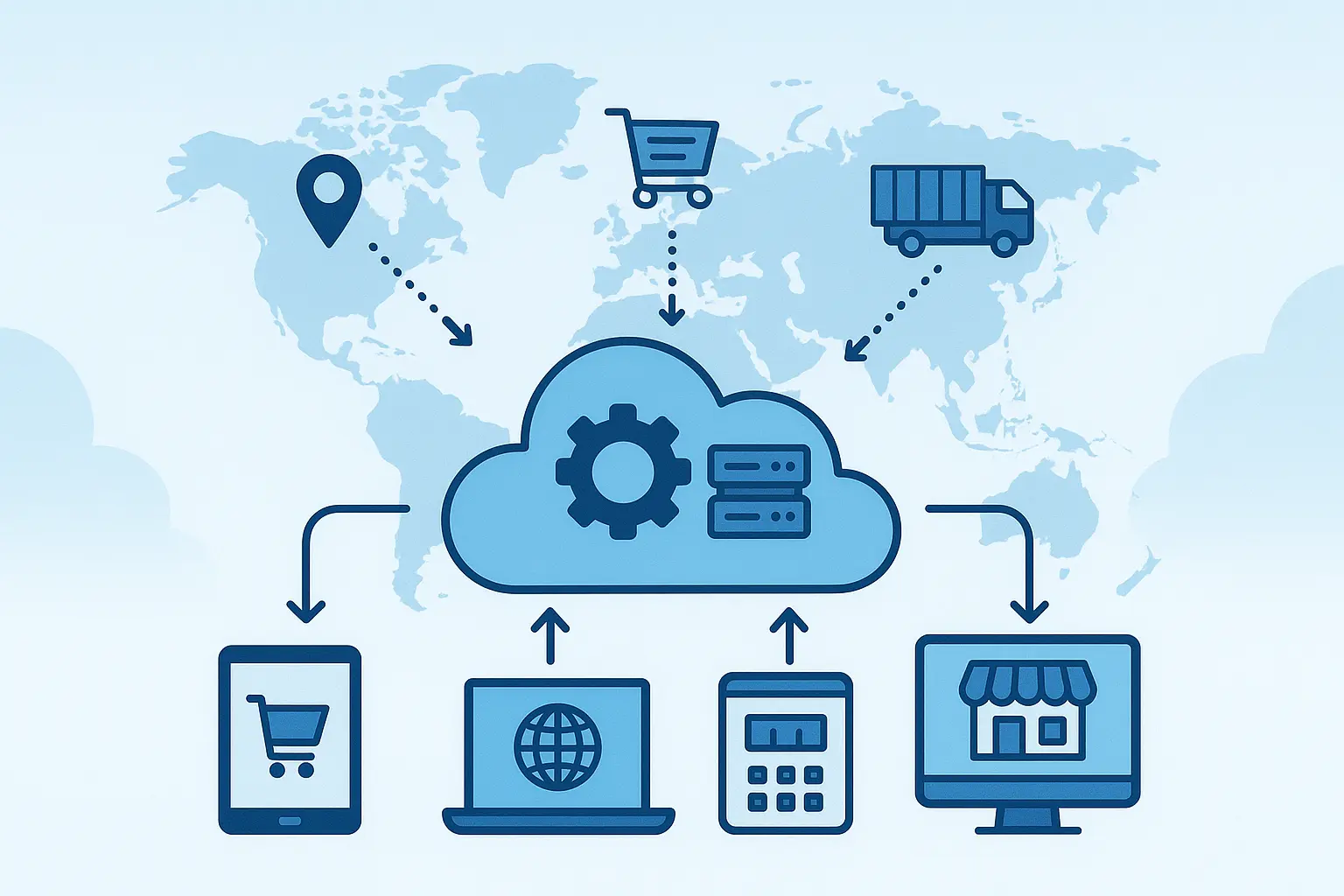
Surviving Crisis Mode: Pandemic Response and Market Disruption
Then 2020 happened. Remember when everyone was suddenly ordering everything online and half the websites crashed? Yeah, that was the ultimate “sink or swim” moment for e-commerce companies. This Lazada case study reveals how their response demonstrated the strength of their operational foundation and crisis management capabilities.
Supply chain diversification and investment in local fulfillment centers enabled Lazada to maintain 95% order fulfillment rates during peak pandemic restrictions. While competitors experienced significant service disruptions, Lazada actually gained market share by staying reliable when people needed them most.
Essential Goods Prioritization Strategy
Strategic pivot to prioritize essential items and healthcare products during lockdowns wasn’t just good PR – it was smart business strategy that built customer loyalty during a critical period. When toilet paper was worth its weight in gold, Lazada made sure people could actually get what they needed.
The prioritization strategy required rapid operational changes including supplier relationships, inventory management, and logistics optimization. Lazada’s ability to execute these changes quickly while maintaining service quality separated them from competitors who were still trying to figure out what was happening.
Lazada’s LazLive platform exemplifies crisis adaptation through community building. The Grassroot Livestreamers Incubation Program, launched in Vietnam in November 2019 and expanded to Thailand, onboarded over 3,000 live streamers who helped maintain customer engagement during lockdowns while creating new income opportunities for local talent in the digital economy.
Competitive Pressure Response
Rising competition from Shopee, TikTok Shop, and other platforms required strategic adjustments to maintain market leadership. Introduction of live streaming commerce, social shopping features, and gamification elements directly responded to competitive threats while leveraging Alibaba’s technological capabilities.
The competitive response wasn’t reactive – it was strategic. Lazada identified emerging trends and consumer preferences, then developed features that matched competitors while providing superior experiences through better technology integration. Sometimes it’s not about being first – it’s about being better.

What This Means for Your Marketing Strategy
Look, here’s the bottom line from this Lazada case study: it offers practical lessons for businesses looking to scale their marketing efforts without losing their minds. The systematic approach to market analysis, crisis adaptation, and technology integration provides a blueprint for sustainable growth that actually works.
Crisis management strategies that kept Lazada thriving during unprecedented challenges show why businesses need marketing partners who can adapt quickly while maintaining performance focus. Real-time campaign optimization and data-driven analytics provide the responsive decision making that enables companies to outperform competitors during market disruptions.
Implementing systematic marketing strategies requires understanding the fundamentals of performance measurement, which is why mastering marketing budget allocation principles becomes essential for businesses seeking to replicate data-driven growth methodologies across diverse market segments.
Checklist: Implementing Lazada’s Marketing Lessons
-
Develop flexible bid strategies for competitive keyword positioning
-
Implement multi-touch attribution to optimize channel performance
-
Create localized campaigns that respect cultural preferences
-
Build organic growth mechanisms into user experience design
-
Diversify revenue streams beyond primary business model
-
Establish crisis management protocols for market disruptions
-
Invest in mobile-first experiences and performance optimization
-
Form strategic partnerships for market entry and credibility
Most importantly, Lazada’s success through systematic strategy development validates structured approaches to marketing: thorough discovery processes, detailed market understanding, and custom execution plans that integrate seamlessly with existing systems. This methodology ensures businesses receive comprehensive, performance-focused marketing that drives measurable results.
Ready to apply these lessons to your own business? The Marketing Agency specializes in the same data-driven, performance-focused strategies that powered Lazada’s transformation. From comprehensive market analysis to real-time campaign optimization, we help businesses achieve measurable growth through scientific marketing approaches. Schedule a discovery call today to learn how these proven strategies can accelerate your business growth.
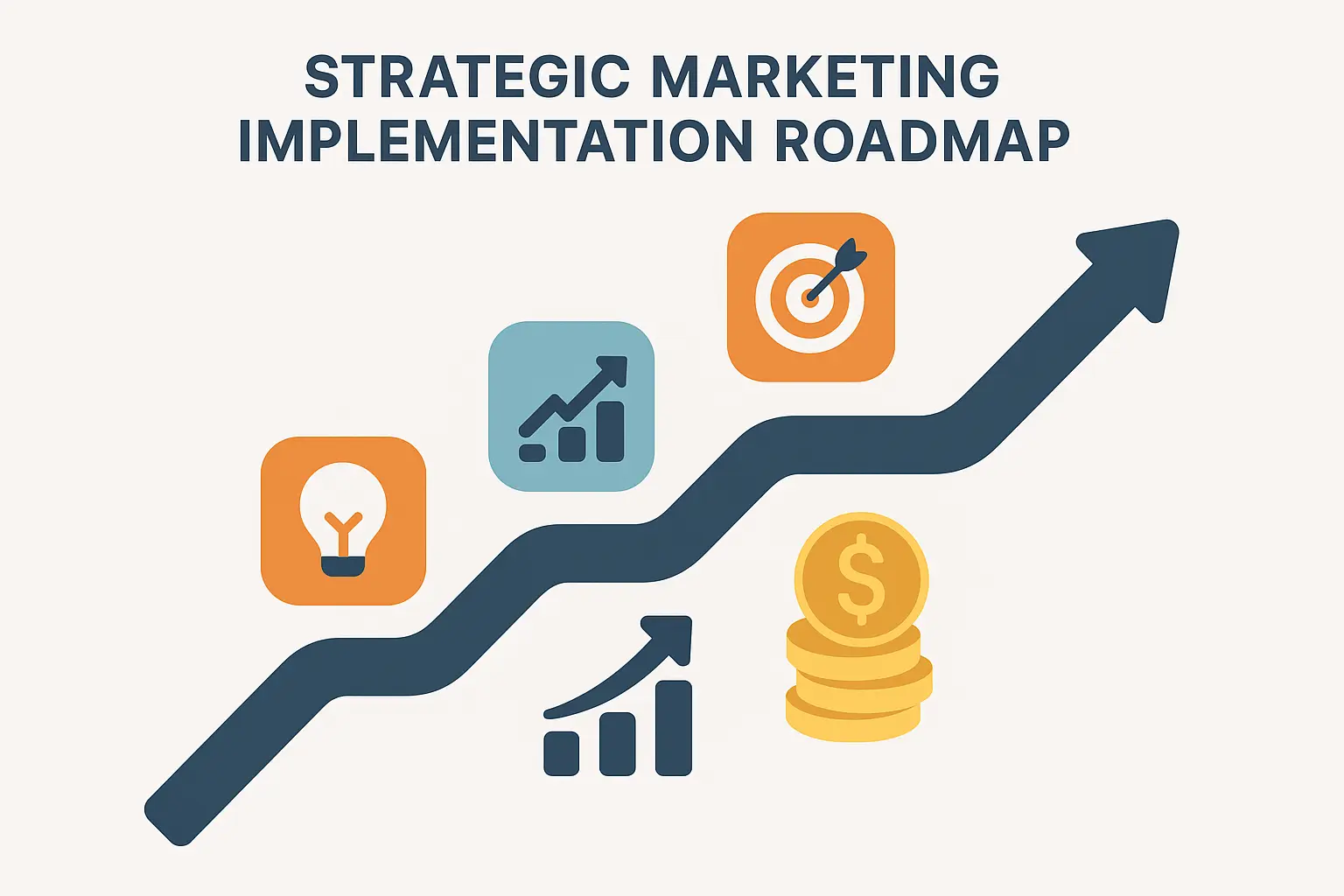
Final Thoughts
This Lazada case study isn’t about having all the answers from day one. It’s about building systems that can adapt, evolve, and optimize based on real market feedback and data analysis. The companies that thrive in competitive markets aren’t necessarily the ones with the best initial strategy – they’re the ones that can learn, adapt, and execute most effectively.
The real takeaway here extends far beyond e-commerce. Whether you’re scaling a SaaS platform, launching a service business, or expanding into new markets, the principles of data-driven decision making, customer-focused optimization, and systematic strategy development apply universally. Success comes from understanding your market deeply, measuring what matters, and having the flexibility to change course when the data demands it.
What’s crazy is that most of their competitors saw these same opportunities but just couldn’t execute fast enough. Sometimes it’s not about being the smartest person in the room – it’s about being the one who actually does something about what they learned.



